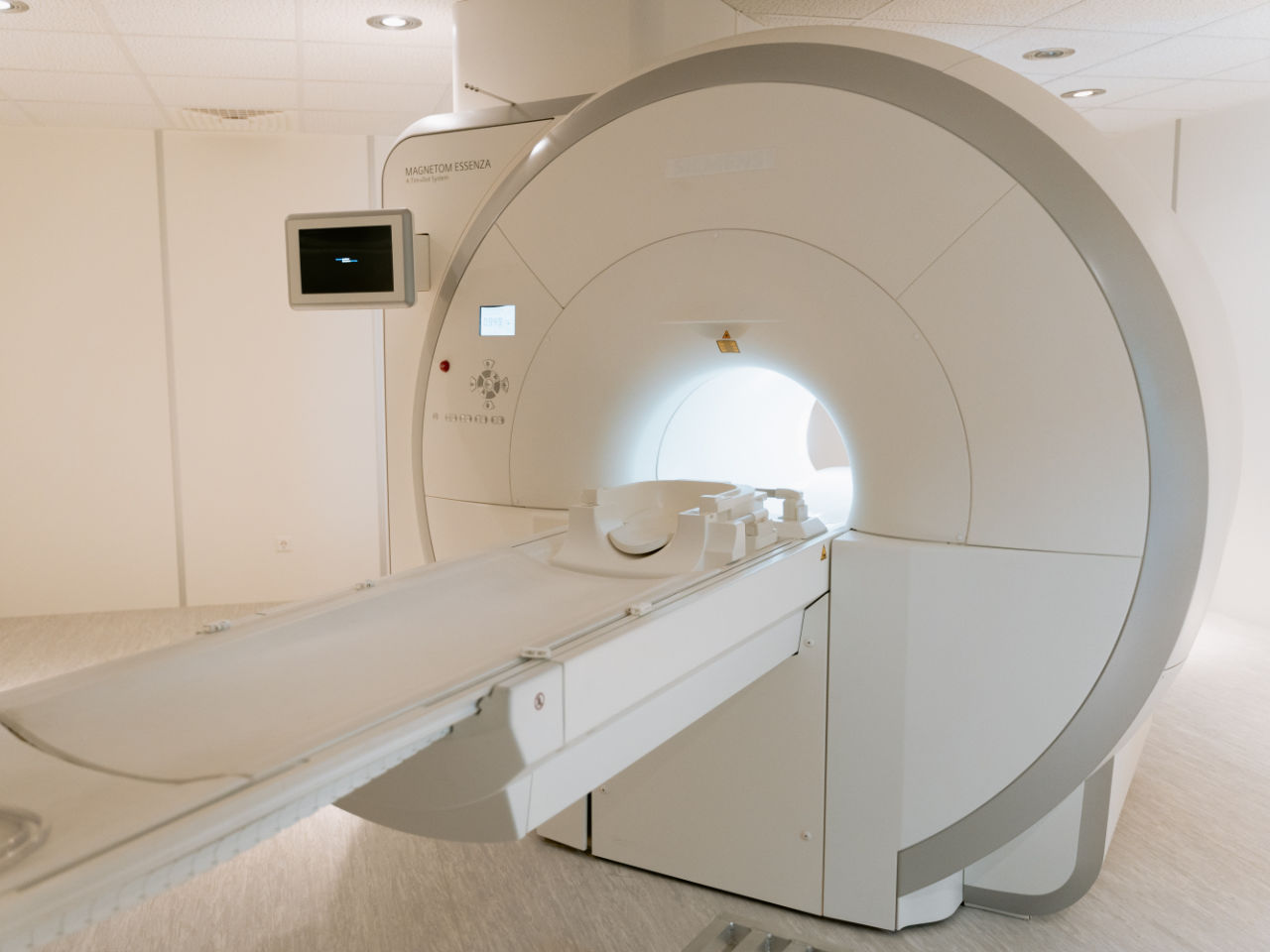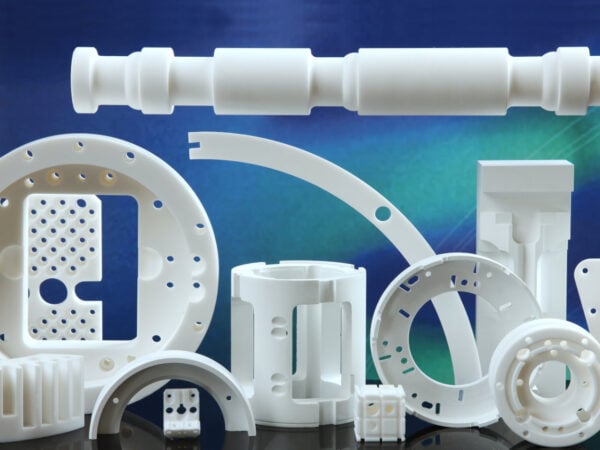Technical Ceramics in Medical Scanners
Ceramic Materials used in Medical Scanners
Some of the most common ceramics Precision Ceramics supply for medical scanners include Shapal Hi M Soft, Macor, Alumina, Aluminium Nitride and Boron Nitride. The optimal ceramic material will depend on the specific function of the component within the scanner, (e.g., X-ray tube housing vs. ultrasound transducer).
As medical imaging technology continues to evolve, the development and application of even more specialized ceramic materials is likely to play a growing role in future advancements.

Shapal Hi M Soft™
Machinable AlN
Shapal Hi M Soft is a hybrid type of machinable Aluminum Nitride (AlN) ceramic that offers high mechanical strength, electrical insulation, and thermal conductivity.

Macor®
Machinable Glass Ceramic
Macor is a hybrid glass-ceramic with the machinability of a metal, and the performance of an advanced technical ceramic. Macor is an excellent thermal and electrical insulator.

Alumina (Aluminium Oxide)
CeramAlox™
Alumina, also known as Aluminium Oxide, is a hard wearing advanced technical ceramic material frequently used in a wide variety of industrial applications.

Aluminum Nitride
CeramAlum™
Aluminum Nitride (AlN) is an excellent material to use if high thermal conductivity and electrical insulation properties are required -- an ideal material for use in thermal management and electrical applications.

Boron Nitride
Boron Nitride Grades
Boron Nitride (BN) is an advanced synthetic ceramic material available in solid and powder form. It has outstanding thermal conductivity, electrical insulation and thermal properties and is easy to machine.
Medical Scanners using Ceramics

X-ray
X-rays are the oldest and most common type of medical scanner. They use ionizing radiation to produce two-dimensional images of bones and some soft tissues. X-rays are often used for imaging fractures, diagnosing pneumonia, and examining teeth for example.

CT Scan (Computed Tomography)
CT scans use X-rays to create detailed cross-sectional images (slices) of the body. A CT scan machine rotates around the patient, taking multiple X-ray images from different angles. A computer then processes these images to create a three-dimensional picture of the body’s internal structures. CT scans are used for a wide variety of purposes, including diagnosing cancer, heart disease, and internal injuries.

MRI (Magnetic Resonance Imaging)

Ultrasound
Ultrasound scanners use high-frequency sound waves to create images of internal organs, blood vessels, and developing fetuses. Ultrasound scanning is a safe and painless imaging technique commonly used in pregnancy monitoring. Ultrasound is generated from transducers made with Piezoceramics.

PET Scan (Positron Emission Tomography)
PET scans use radioactive tracers to measure metabolic activity in different tissues of the body. The tracers are injected into the bloodstream and then accumulate in tissues that are using more energy. A PET scan can help detect cancer, heart disease, and other conditions that affect metabolism.
Datasheets

Shapal Hi M Soft
Machinable Aluminium Nitride

Macor
Machinable Glass Ceramic

Alumina
All Grades CeramAlox

Boron Nitride
Boron Nitride Grades

Aluminum Nitride
PCAN1000
Frequently Asked Questions
-
Why are ceramics used in medical scanners?
There are several key reasons why ceramics are a material of choice for many components in medical scanners:
- Biocompatibility: Most types of ceramics are inert within the human body, meaning they don’t trigger adverse reactions or interact with tissues. This makes them ideal for components that may come into contact with patients during scans.
- High Strength and Durability: Many ceramics offer exceptional strength and resistance to wear and tear. This is crucial for scanner components that need to withstand repeated use and potential pressure from patient positioning.
- X-ray Transparency: Unlike some metals, ceramics allow X-rays to pass through them with minimal interference. This transparency is essential for scanners to capture clear images of internal body structures.
- Electrical Insulation: Most ceramics are excellent electrical insulators, which helps to maintain the electrical integrity of scanner components and protects patients from stray currents. Ceramics have a negligible influence on the magnetic field which allows them to be used inside an MRI during a scan.
- Heat Resistance: Some medical scanners, like CT scanners, generate a lot of heat. Ceramics can handle high temperatures without warping or losing their properties.
-
What are the different components in a medical scanner made of ceramics?
A variety of components within medical scanners can benefit from using ceramics. Here are some examples:
- Patient Positioning Components: Tables, pads, and other structures used to position patients during scans can be made from ceramics to ensure strength, stability, and biocompatibility. They may also be used to enhance the resolution or contrast of the imaging.
- Collimators: These components control the X-ray beam within the scanner. Ceramics are often used for their ability to withstand the X-ray radiation and shape the beam precisely.
- Detector Housings: The detectors in medical scanners convert X-rays into electrical signals that create the image. Ceramic housings can shield these delicate components from stray radiation and maintain optimal operating temperatures.
- Insulators: Ceramic insulators separate electrical components within the scanner, preventing unwanted current flow and ensuring safe operation.
- Feedthroughs and Instrumentation: ceramics may be used to provide the power to the electromagnet and also for instrument power distribution through the wall of a scanner.
-
What types of medical scanners use ceramics?
Ceramics are widely used in various medical imaging technologies, including:
- X-ray machines: These scanners use X-rays to produce basic images of bones and internal structures. Ceramics are often used in collimators and patient positioning components.
- CT scanners (Computed Tomography): These scanners generate detailed cross-sectional images using X-rays. Ceramics play a role in collimators, detector housings, and patient support structures.
- PET scanners (Positron Emission Tomography): These scanners use radiotracers to assess metabolic activity within the body. Some PET manufacturers may utilize ceramics for specific parts due to their mechanical, electrical, thermal and radiation resistance properties.
- New Beam Therapies (Neutron Capture Therapy, Proton Beam Therapy): There are innovative therapies being developed to improve the targeting of cancerous areas in the patient and to reduce side effects from the treatment. All of these new systems will require advanced ceramics as part of the durable electrical, thermal and mechanical components.
It is important to note that the specific types and applications of ceramics may vary depending on the scanner manufacturer and model. In addition to the examples listed above, there will be a multitude of small ceramics parts used in the electronics and control systems, e.g. resistor cores, fuses, surge arrestor sleeves, ceramics substrates, dielectrics, inductor cores and various sensors. These small but critical components are located within all modern engineered systems.


